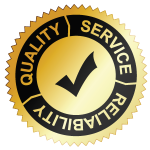
Two 1997 models. Guess which has one million miles on the odometer? 
When quality matters, it’s important to understand what that word actually means when it comes to hot tubs. Aesthetics, spec sheets and special features may influence the decision-making process but they have next to nothing to do with the quality of a product.
What determines quality? Here are six things that matter:
- Comfort & Massage
The whole point of a hot tub is relaxation and/or therapeutic massage. Some cheap hot tubs feel OK dry in the showroom but when you spend any time in them when activated, they turn out to be uncomfortable, with badly-contoured seats, poorly placed jets, confusing controls and annoying features.
A high-quality hot tub has been carefully thought through by designers and each detail has been painstakingly planned with comfort and massage in mind, with intelligently placed jets and a seating layout that feels just right when actually in use, not just feel OK on the showroom floor.
- Engineering
Some brands meticulously plan every aspect while cheaper brands just drill holes in a shell, install jets and pipes, put in equipment and viola, let’s hope for the best. A well-engineered tub will perform better, last longer and offer a more pleasant experience, just as would be the case between a cheap car and a high end one.
- Workmanship
Precision work and attention to detail during the manufacturing process makes a huge difference. Things like how carefully the acrylic is pulled, how well the fiberglass is applied, how meticulously aligned the jet holes are, how snug the jet bodies fit into their spaces, and a million other details.
- Performance & Reliability
Performance and reliability have to do with the equipment (motors, pumps, thermostats, heating elements, circuit boards, digital controls, flow switches, high limit switches, impellers, seals, bearings, etc.).
The differences between higher and lower quality equipment may be apparent immediately in some cases, but sometimes it’s not until later that they become evident.
- Plumbing Design
In a poorly planned hot tub arterial system, some jets are considerably weaker than others. The further from the pump, the weaker they become. For instance, a jet with a 10-foot feeder hose will be a lot weaker than one with a 1-foot hose. But a good spa manufacturer has done the math and figured out how to provide equally strong pressure to each jet.
Inefficient plumbing stresses the joints and strains the hoses so that there is a much higher chance of leaks developing, and delivers less pressure per jet per horsepower.
A well-engineered plumbing arterial system has short-as-possible runs, uses high-flow pipes and hoses, and eliminates “T” joints and sharp angles. That’s why some higher end hot tubs can get away with a smaller pump while other manufacturers have to compensate for poor plumbing by putting in a big motor.
- Durability & Longevity
Some hot tubs start looking ugly and begin blowing apart after a couple years while others stay handsome and solid for decades.
It’s not usually the quality of equipment that determines the life expectancy of a hot tub – rather, it’s the physical hot tub and cabinet.
Low quality equipment can usually be repaired or replaced but when a hot tub itself starts to come apart, it’s “done”. Hot tubs die much sooner if the manufacturer uses low grade materials.
Things like the kind of wood they use – the kind of glues, gaskets, silicones, epoxies, resins, acrylics, pipes, clamps, hoses, fitting, fiberglass, composites, staples, plastics, resins, foam parts, screws, jets, insulation, vinyl, trim, fasteners, seals, plastics, etc.; these are the things that determine how long a hot tub will last.
It’s interesting to note that none of the above can be known by just looking at a hot tub in a showroom or reading a spec sheet. And most salespersons aren’t educated enough on these topics to really know the difference. So if quality matters to you, I invite you to come by to discuss these concepts to help you make an informed decision.






